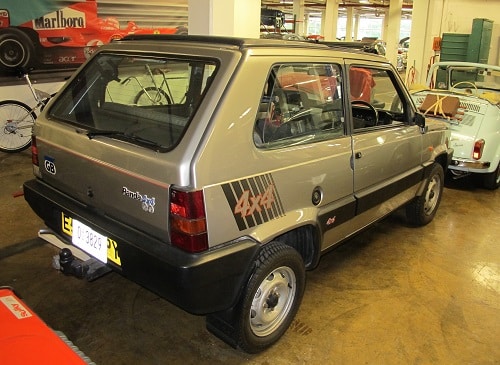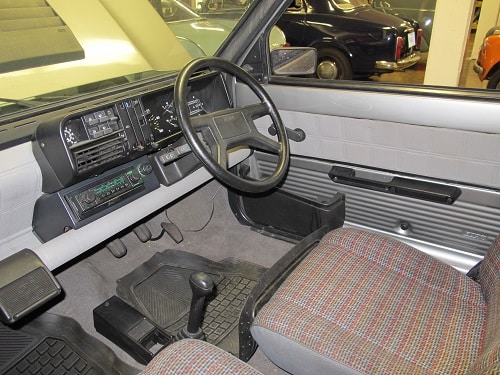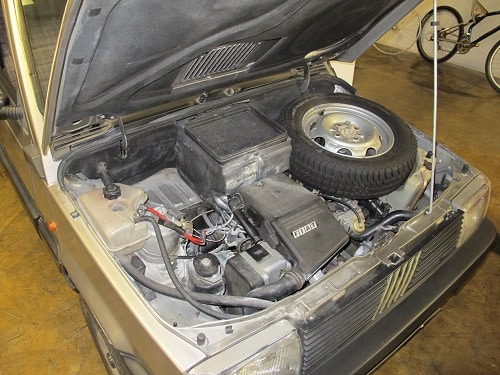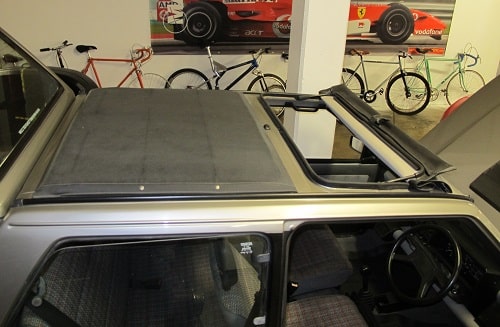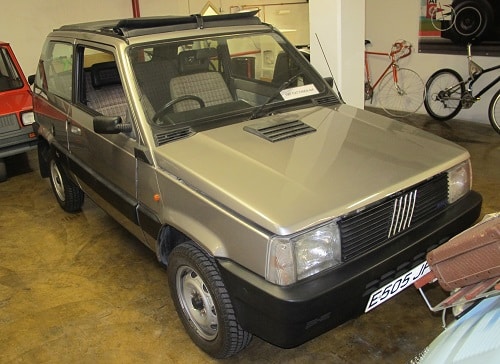
Fiat Panda 4×4-1987
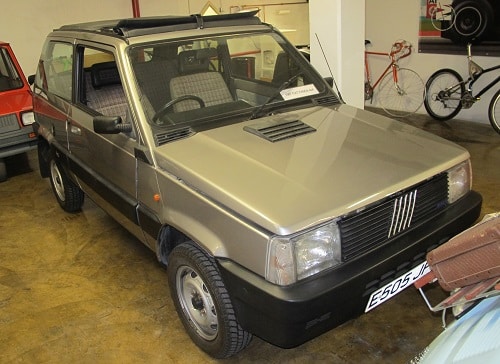
The Fiat Panda was introduced in 1980, and was meant to be a city car for the masses; simpler but in the spirit of Citroën’s 2CV. It was a no-frills utility vehicle designed by Giorgetto Giugiaro of Italdesign. Giugiaro compared the Panda to a pair of jeans – simple, practical, and without frills. For practicality, it featured cheap, flat panes of glass, removeable and washable seat and door panel covers, and a multi-configurable, removable rear seat. The base model had a modest 2 cylinder 652cc engine that drove the front wheels.
In June 1983 Fiat introduced the 4×4 Panda, developed by the Austrian company Steyr-Puch. It was the first small, transverse-engined production car to have 4-wheel drive. The Panda 4×4 had a larger engine than the standard Panda, and a 5-speed gearbox with a very low first gear for off-road use. While the engine was made by Fiat, Steyr-Puch designed and produced the rest of the drivetrain, from clutch to rear brakes, shipping the entire package to Fiat for installation into reinforced chassis. 35 years later, the third-generation Panda still remains in production, a testament to its solid design.
Specifications:
Manufacturer: Fiat Auto S.p.A. Turin
Country of Origin: Italy
Drivetrain Configuration: Front engine, selectable 4-wheel drive
Engine: 4 cylinder, 965cc, water-cooled, 48 HP
Transmission: 5 speed manual
Top Speed: 80 MPH
Years of Production: 1980-present
Number Produced: More than 10.5 million
Original Cost: approx. $8360 USD

